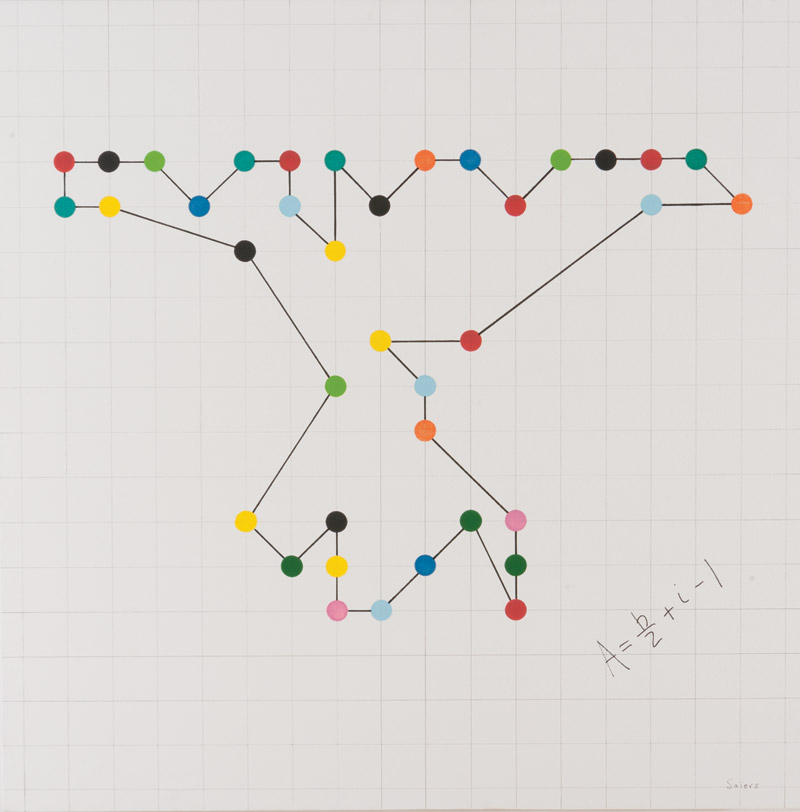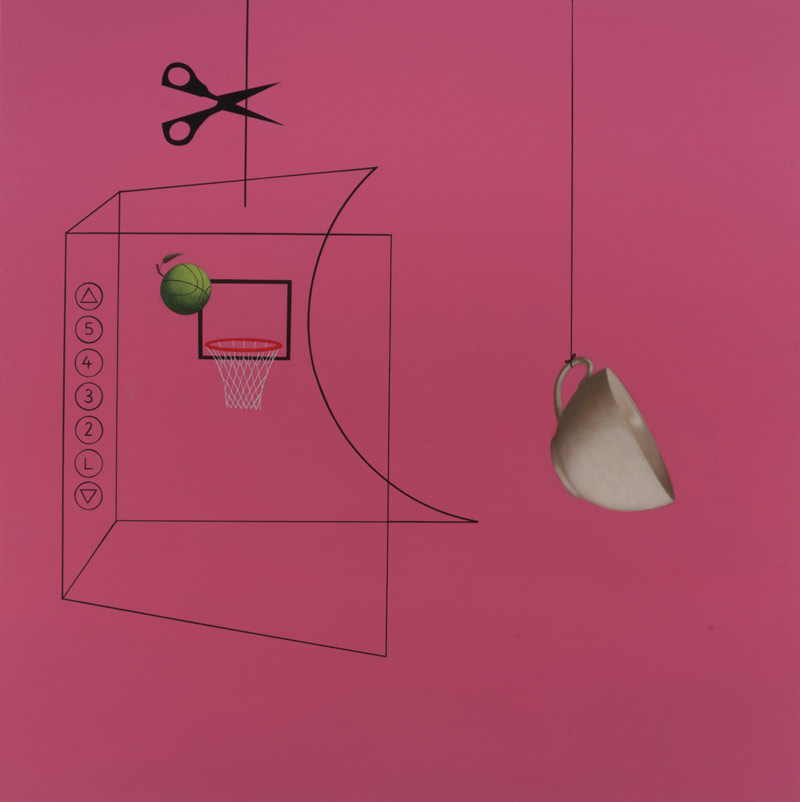Connecting the Dots
Nelson Saiers graduated with his doctorate in math at 23. Now he wants to use math to explain the world—through art.
Nelson Saiers knows he needs to slow down. He speaks with a velocity almost—but not quite—as striking as his quicksilver intelligence. His ideas—on the nature of love, the depravity of genocide, the valor in persistence—come racing out of him with an urgency bordering on the manic.
“The first thing about math is it’s a very precise language,” says Saiers, 39, who earned his bachelor’s degree at UVA in 1997 and his Ph.D. in 1998 when he was just 23. “If I say I love something, that can have all kinds of connotations. If I say 7 is greater than 3, it’s a very precise language.”
Saiers stands on the blond wood floor of New York’s Studio Vendome, a SoHo gallery now hosting his first gallery show, “Blindfolded in Gravity’s Shadow.”

Tall and youthful, with hazel eyes and short brown hair, he is dressed in a hooded sweatshirt, black jeans and a pair of black Puma high tops. He looks like a weekend basketball player, complete with a restless, prowling energy that suggests he is needed back on the court. Instead, he is a man in the middle of a major career switch. Last June, Saiers stepped down from his role as chief investment officer of Saiers Capital to pursue a career as an artist. A resident of New York’s Upper East Side, he says he wants to use his art to build awareness around issues he observed firsthand growing up in war-torn regions of the world as the son of a U.S. diplomat.
The abrupt decision might seem like a flight of fancy until Saiers gets talking. Math and art, he insists, have much in common. His conceptual paintings—flat, deceptively simple pieces that make ample use of primary colors and Braille, fuse mathematical principles with rudimentary geometric shapes: circles, squares, polygons and straight lines. For Saiers, they are riddles that employ mathematical theorems to express truths about the human condition.
“Math doesn’t have to relate to the real world,” Saiers says. “It’s a precise language, but also something rooted in abstraction.” Mathematicians, he adds, typically bring together disparate concepts in a tightly knit, deceptively simple package that reveals a truth.

“A mathematician cuts out all flab,” says Saiers. “There’s no flab in math. A mathematician tries to understand the underpinnings of a concept or theory—what is really making something happen. So there’s this desire to always pull out the essence of the entity.”
Midway through last year, a question began to nag at him: What if he took on a human issue, like the moral depravity of genocide? Neither math nor art might be able to answer that question on its own, but Saiers decided to combine his math skills with art to weigh in on the question.
For instance, in “Genocide Is Evil,” Saiers wrote the title phrase in Braille and then connected the Braille dots with straight lines in primary colors. He then looked at the polygons created and realized that to compute the area of an arbitrary polygon, he needed Pick’s Theorem, a mathematical equation devised by Georg Alexander Pick—a philosopher who died in the Theresienstadt concentration camp in 1942. That equation is referenced at the bottom right of the painting.
Born in Denver, Saiers was raised overseas while his father served as an officer for the U.S. Agency for International Development.
In 1975, as an infant, he lived in Ethiopia, in the aftermath of the overthrow of Haile Selassie. At a checkpoint, a machine gun was pointed at his head while rebels searched the car his mother was driving. Although he has no memory of the event, he does remember his father’s next posting. The family was in Afghanistan for the Soviet invasion in 1979. “It’s hard for me to talk about, but I saw some pretty bad things in my life,” Saiers says. “Some of the motivation of being an artist has to come from those experiences.”

Another of Saiers’ works, “Equality,” uses his mathematical specialty, topology, to demonstrate the parity of the human condition. Topology examines whether geometric forms remain unchanged as long as they are not ripped or deformed. In “Equality,” Saiers paints several images—a chair, a doughnut, a candlestick, a coffee cup—that are topologically equal. Above them is the word “human,” written in Braille. The inference is simple: We may all look different, but at essence, we are the same.
“We live in a postmodern world, and this idea of absolute truth is still being wrestled with,” says Saiers. “So I decided to start from scratch, almost like moral axioms.” Saiers insists that he did not leave Wall Street out of any moral qualms. He says his interest in art merely became more consuming.
“I wanted to become a full-time artist,” he explains. “I couldn’t stop doing art. Art and math both strive to see beauty. But for me, art is more suited to address our experiences and the mysteries of life. You wrestle with really interesting issues. I just couldn’t stop thinking about it.”
Nelson Saiers’ work can be viewed at www.nelsonsaiers.com.
